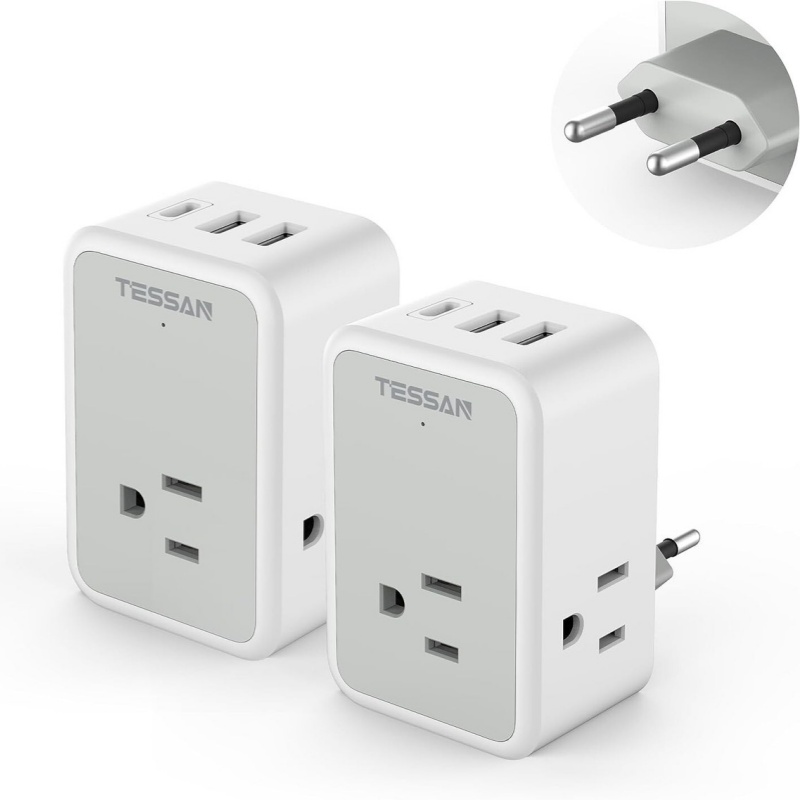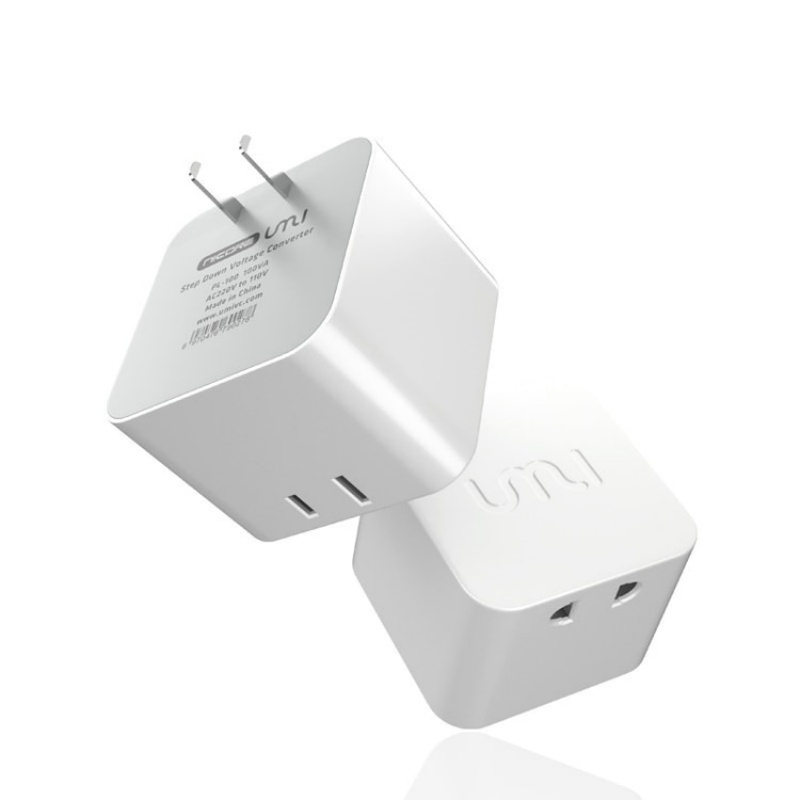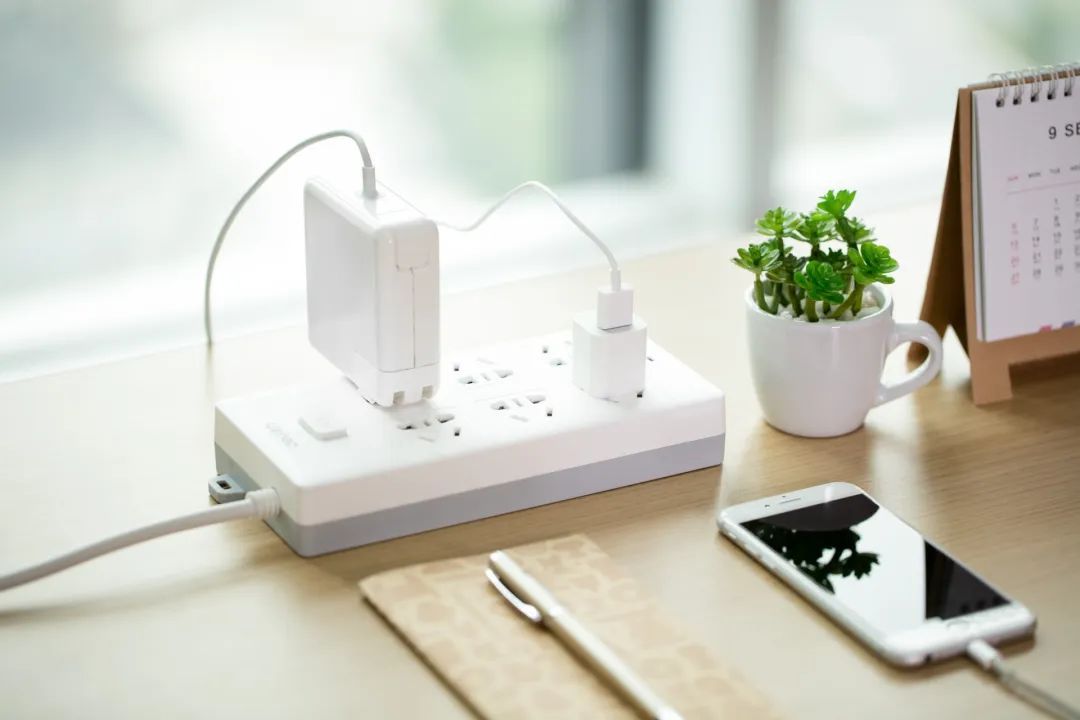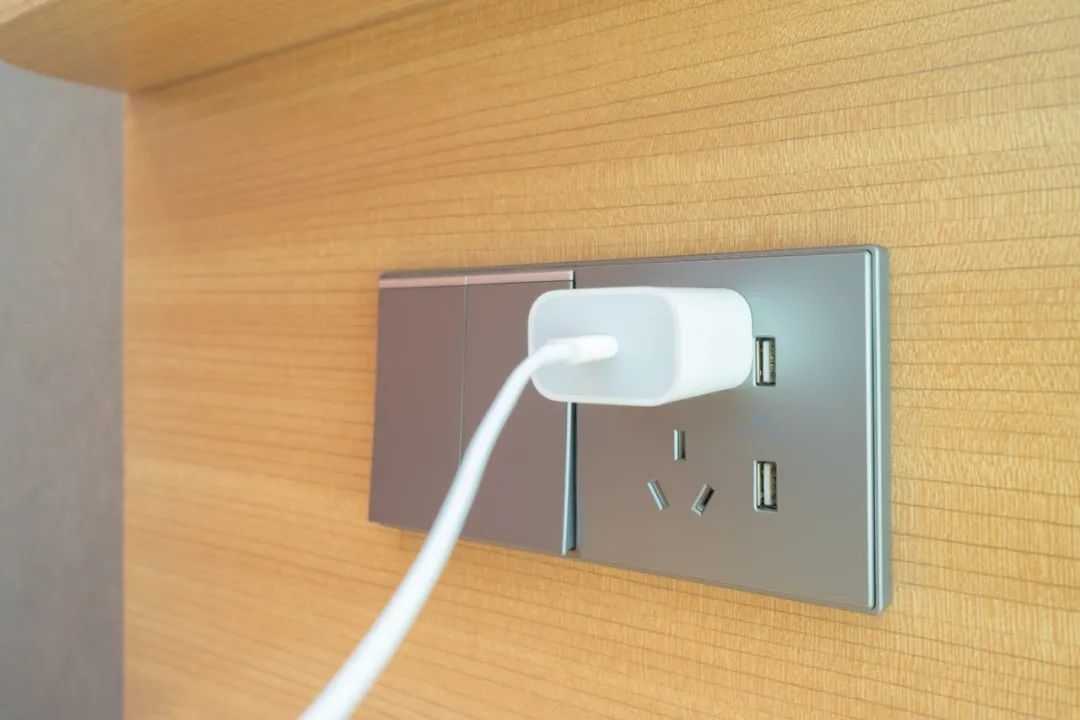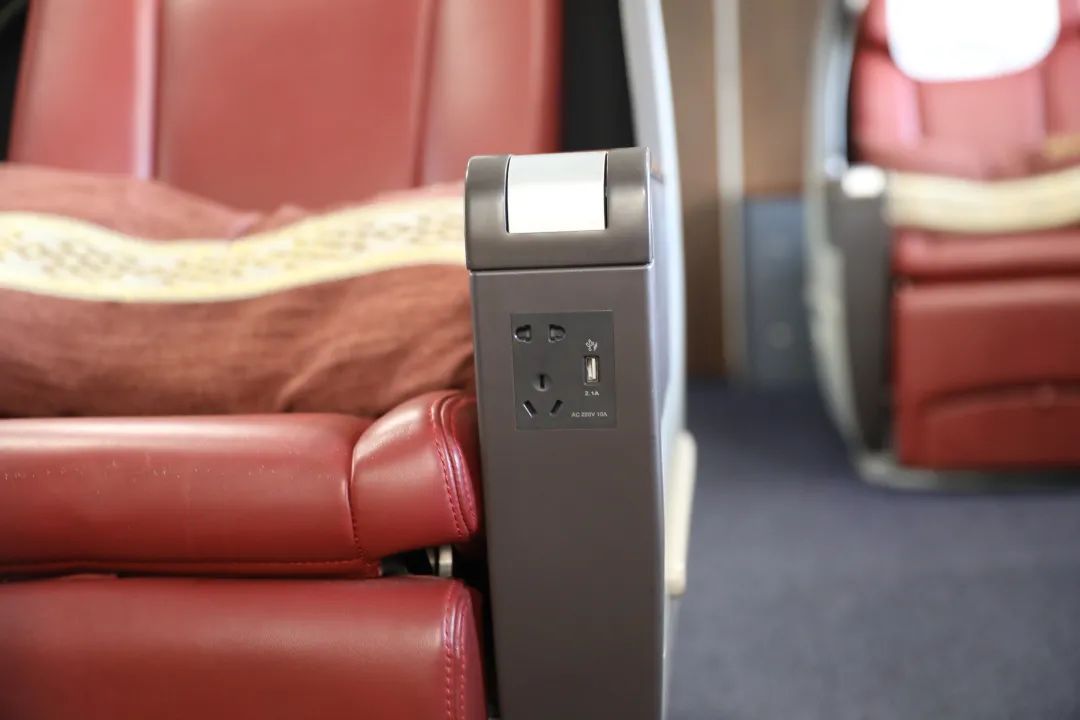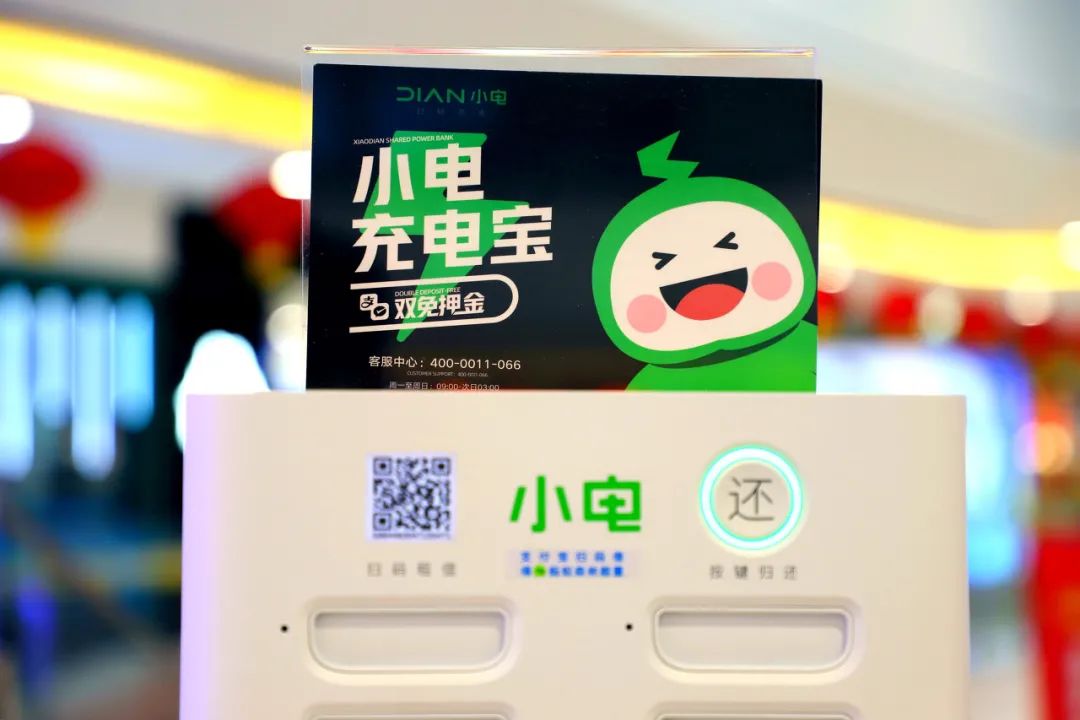Planning a trip to China? Then you’ll want to understand China mains plugs before you go—because charging your devices in hotels, trains, or cafés isn’t always plug-and-play. With 220V voltage and different socket types, using the wrong plug could fry your phone or leave you stuck without power.
This guide breaks down everything you actually need to know about China mains plugs in 2025—what types work, which devices need a converter, and where to buy reliable adapters. We’ve also packed in real-life charging tips, like how to use shared power banks or charge gear on overnight trains. Whether you're coming from the U.S., U.K., Europe, or Australia, this no-nonsense guide keeps you powered up and out of trouble.
1. What Plug Types Does China Actually Use?
1.1 Type A, C, and I: A Confusing Trio
Type A
Two flat, parallel pins without a grounding pin. The pins are about 15 mm long and spaced roughly 12 mm apart. It’s a simple, lightweight plug.This plug is widely used in the U.S., Japan, Canada, and some parts of Central America. In China, you might encounter it in older buildings or international hotels that accommodate foreign guests. It’s mostly found on small electronics like phone chargers, laptops, and travel adapters. However, it’s less common in newer Chinese homes or offices.
Type C
Two round pins, approximately 4 mm in diameter and spaced 19 mm apart. It lacks a grounding pin, making it less safe for high-power devices. The pins are slightly thinner than Type I’s.Type C is common throughout Europe, South America, and parts of Asia. Travelers with European devices (like many laptop chargers or phone adapters) will find this plug familiar. In China, some wall sockets accept Type C plugs, but they might be loose or unstable, so caution is needed especially for heavy or sensitive electronics.
Type I
Three flat pins — two angled pins forming a “V” shape (about 17.5 mm long), plus a vertical grounding pin beneath them. The grounding pin adds safety, especially for high-wattage devices. This is the standard plug type used in Australia, New Zealand, and China. It is by far the most common in modern Chinese buildings—homes, hotels, offices, and public places almost always have Type I sockets. It supports all types of devices, from laptops and phones to appliances like kettles, air conditioners, and hairdryers.
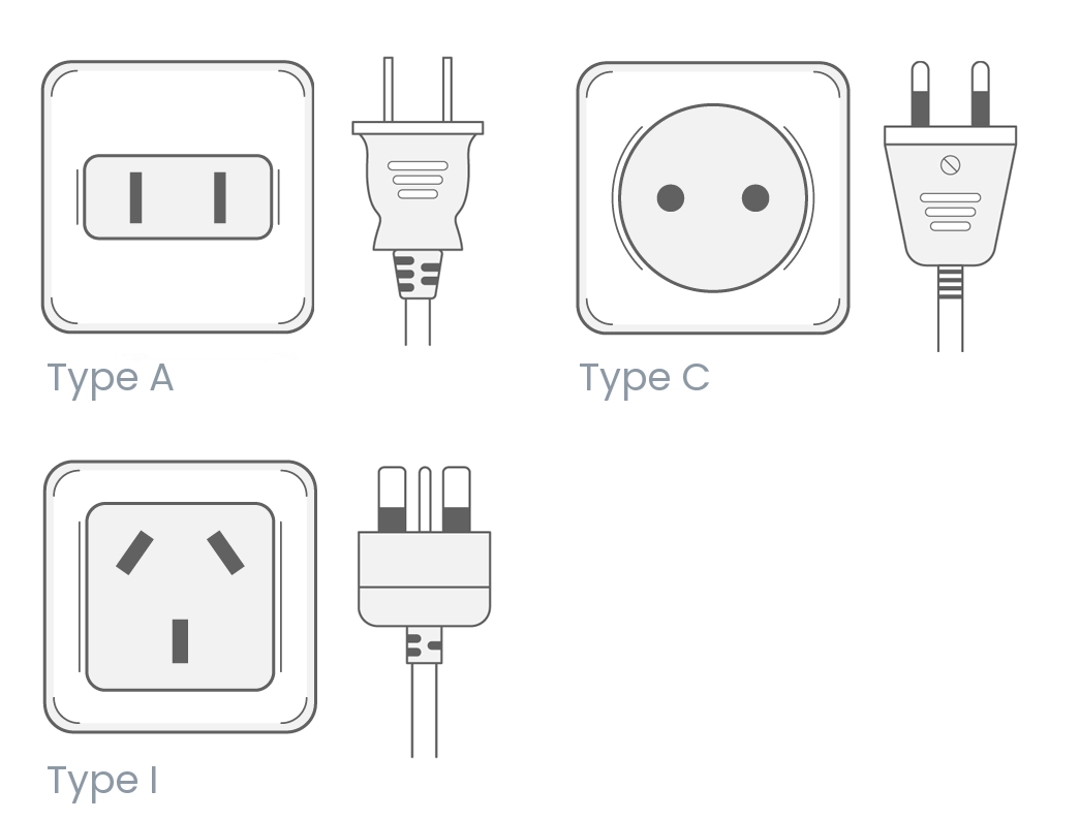
Three types of plugs
1.2 Why Hotel Wall Sockets in China Are So Mixed
Hotels in China vary a lot in their power outlet types. Luxury international chains often install multi-standard sockets that accept Type A, C, G (British-style), and I plugs all in one. This is convenient for travelers from different countries. However, smaller hotels, hostels, or older buildings usually stick to Type I or sometimes even the older Type A sockets only.
Because of this diversity, it’s smart to inspect your room’s sockets immediately after check-in. Don’t just assume your plug will fit. If the sockets look different or limited, it’s better to find a universal adapter before you start unpacking your electronics.
Pro tip: Some hotels also have switches next to the sockets that must be turned on before power flows. If your device isn’t charging, check the switch!
1.3 Ask at Reception: Do They Offer Free Adapters?
Many mid-range and upscale hotels in China are traveler-friendly and provide free plug adapters on request. Just ask at the front desk—they usually keep a small supply to lend or give away.
However, budget hotels and local guesthouses may not offer this service. Sometimes, the hotel requires a deposit for the adapter, which you’ll get back when you return it at checkout. This system helps prevent loss but is still convenient.
If you forget to bring your own adapter and your hotel can’t provide one, you might have to buy one locally or borrow from other guests. Always ask politely, as hotel staff often go the extra mile to help foreign travelers.
2. China’s Voltage and Frequency—Will It Fry Your Devices?
2.1 Standard Specs: 220V & 50Hz
Unlike the U.S. (110V/60Hz) or Japan (100V/50-60Hz), China’s electrical system runs at 220 volts and 50 hertz. This is important because devices designed only for 110V won’t survive a direct plug-in to 220V.
For example, if you plug a 110V-only hair dryer straight into a Chinese socket, you risk burning it out instantly or worse, causing an electrical hazard.
Voltage compatibility is more critical than plug shape. Even if you have the right adapter for the plug, using a device not rated for 220V can damage it or void your warranty.
2.2 Universal Chargers vs. Single Voltage Devices
Luckily, most modern electronics are dual voltage, which means they support 100-240V input and 50/60Hz frequency. This includes:
- Smartphones
- Laptop chargers
- Camera battery chargers
- Portable power banks
For these devices, you only need a plug adapter to fit the socket shape.
But some household appliances from North America, like older hair dryers, curling irons, electric shavers, and certain battery chargers, may be 110V only. These will not work safely in China without a voltage converter.
Before you pack, check the label or manual for your devices’ input voltage range. If you see a single voltage (like 110V only), consider buying a converter or leave the device at home and buy a replacement in China.
2.3 How to Read the Label on Your Device
The easiest way to know if your device works in China is to find the label, usually on the charger or the power brick. It will say something like:
- “Input: 100-240V ~ 50/60Hz” — This means your device works worldwide and just needs a plug adapter.
- “Input: 110V” — This means it only works in low-voltage countries and requires a voltage converter in China.
Sometimes this label is on the device itself, sometimes on the charger or the plug. Don’t guess — always check before you plug it in.
3. Adapter or Converter? What You Really Need
3.1 Plug Adapter ≠ Voltage Converter
Many travelers confuse these two:
- A plug adapter changes the shape of your plug so it fits Chinese sockets.
- A voltage converter changes the electrical voltage from 220V down to 110V (or vice versa).
If your device supports 220V, a plug adapter alone is enough. But if your device only supports 110V, plugging it directly in with just an adapter can destroy your device or cause safety hazards.
- Plug adapter
- Voltage Converter
3.2 When You’ll Actually Need a Converter
You’ll need a voltage converter if:
- Your device says 110V only on the label.
- It’s a high-wattage appliance like a hair dryer, curling iron, electric razor, or coffee maker.
- You want to use it safely without risk of damage.
Converters come in different wattage ratings — always buy one that can handle your device’s power consumption. Low-quality or undersized converters can overheat or fail.
If you don’t want to carry a bulky converter, consider buying a dual voltage device before traveling, or buy a local replacement once you arrive in China.
3.3 Best Travel Plug Adapters for China (Updated 2025 Picks)
Not all plug adapters are created equal. For China, we recommend the Flight 001 4-in-1 Adapter (compact and color-coded), or the Anker PowerPort Cube (includes USB ports and surge protection). If you’re traveling across Asia, get a universal adapter with built-in fuse and USB-C for future-proof charging. Avoid cheap, no-brand adapters—they may break or overheat.
Not sure which plug works in China? Find out in Top 6 Plug Adapters for Visiting China: Reliable, Certified, and Perfect for 220V Power
4. One-Glance Plug & Power Guide: Foreign Travelers’ Quick Reference for China
Travelers often ask: “Do I need a plug adapter for China? What about voltage converters?” Here’s a quick reference chart based on your home country. It shows the plug type you use, the local voltage, and whether you need an adapter or converter when traveling to China’s 220V system.
| Country | Plug Type(s) | Voltage at Home | Adapter Needed? | Converter Needed? |
|---|---|---|---|---|
| USA | A | 110V | ✅ Yes | ⚠ Maybe (check device) |
| UK | G | 230V | ✅ Yes | ❌ No |
| Europe (EU) | C | 230V | ⚠ Sometimes | ❌ No |
| Australia/NZ | I | 230V | ❌ No | ❌ No |
| Japan | A | 100V | ✅ Yes | ✅ Yes (most devices) |
| Canada | A | 110V | ✅ Yes | ⚠ Maybe |
| South Korea | F, C | 220V | ❌ No | ❌ No |
| India | D, M | 230V | ✅ Yes (Type I) | ❌ No |
| Russia | C, F | 220V | ⚠ Sometimes | ❌ No |
Key Notes:
- “Adapter Needed” means your plug shape differs from China’s Type I or compatible sockets.
- “Converter Needed” depends mostly on whether your device supports 220V input. Check device labels!
- European Type C plugs sometimes fit into Chinese sockets, but may be loose.
5. Where Can You Buy a China Plug Adapter? (Online & On the Ground)
5.1 Buy Before You Fly: Amazon, Lazada, Shopee
The easiest way to avoid adapter issues is to buy one before you leave. Platforms like Amazon, Lazada or Shopee offer reliable travel adapters with surge protection and USB ports. Many travelers go for compact models with multiple plug types, USB-A and USB-C ports, and surge protection. Prices typically range between $10 and $25, depending on quality and brand. Ordering early not only helps you avoid airport markups but also gives you peace of mind—no surprises at your hotel room when you realize nothing fits.

Purchase channel
5.2 On Arrival: Airport Shops, Hotels, or Electronics Malls
Forgot to pack one? Don’t worry. You’ll still have several options once you land in China. Major international airports like Beijing Capital or Shanghai Pudong often stock travel adapters at convenience stores or electronics counters, though prices can be 30% to 50% higher than what you'd pay online. Some hotels—especially international chains—sell or rent adapters at the front desk. Just be aware that you may need to leave a deposit, which is refunded when you return the adapter at checkout. If you want more variety, head to a local electronics mall such as Suning or GOME, where you can compare products firsthand. These stores have a wide selection, but you may need to ask staff in basic Mandarin or use a translation app to communicate your needs.
5.3 What About Local Stores Like Suning or JD.com?
In large cities such as Beijing, Shanghai, or Guangzhou, you can also pick up plug adapters from major electronics chains like Suning, D.Phone, or even supermarkets like Carrefour. Another solid option is ordering from Chinese e-commerce giants like JD.com or Taobao, both of which offer same-day or next-day delivery in many urban areas. The downside? These platforms usually require a Chinese delivery address, and you’ll need to pay via WeChat Pay or Alipay. If you’re staying at a hotel, don’t hesitate to ask the concierge or front desk staff for help—they’re often willing to place the order for you and have it delivered straight to your room. Just make sure to avoid buying from unverified street vendors or knock-off markets, where low-quality or unsafe adapters are common.
6. How to Charge Your Devices on the Go in China
6.1 In Hotels: Is One Outlet Enough for All Your Gear?
Most hotel rooms in China have only one or two wall sockets. If you’re charging a phone, a laptop, a smartwatch, and maybe even a camera, that’s not nearly enough. To avoid outlet wars, bring a multi-port USB charger or USB power strip. Many modern options offer USB-A and USB-C ports with fast-charging features.
Also, some older hotels might place sockets in odd places—behind the bed or under a desk. A longer cable or a compact extension cord can be a lifesaver. And remember: many hotels turn off the power when you remove the key card, so devices won’t charge unless you're in the room.
- Recommended Devices: Anker 6-Port USB Charger or Baseus 65W GaN Fast Charger
- Price Reference: Multi-port USB chargers typically cost around 120–250 RMB
- Suitable Hotels: Ideal for most hotels, especially older rooms with only one or two power outlets
6.2 On Trains: Bullet Train Charging Etiquette
Most high-speed trains in China—especially newer G and D class trains—offer charging ports at each seat or row. These are usually Type I sockets or USB ports, though older trains may not have them at all.
Use power outlets respectfully. Avoid blocking shared sockets with bulky adapters, and don’t unplug someone else's charger without asking. Bringing a portable power bank is smart for trains that lack outlets or if you're unsure.
- Socket types: Type I or USB-A (depending on the train model)
- Train models: G/D high-speed trains usually have sockets; some K/T trains may lack them
- Power strips: Bringing large power strips is not recommended and may be discouraged by train staff
- Charging etiquette: Don’t save seats with your charger, avoid hogging outlets, and don’t use high-power devicesIf you want, I can help polish or expand this further!
6.3 In Restaurants and Cafes: Do They Let You Plug In?
Big-name chains like Starbucks, Pacific Coffee, and Heytea often provide charging ports at their tables or bar seating. You usually don’t need to ask, but it’s polite to buy something before plugging in. Smaller restaurants or local teahouses may not have sockets—or might refuse usage unless you're a paying customer.
Some fast-food places like McDonald’s and KFC also provide USB ports, especially in cities like Beijing, Shanghai, or Guangzhou. Always carry your own charging cable and adapter, just in case.
- Tip: Avoid plugging in during peak hours and be mindful of others needing outlets.
6.4 Sharing Power Banks in China—How It Works
Shared power banks are everywhere in China—malls, restaurants, subways, and parks. Major providers like JieDian, XiaoDian, and Meituan let you scan a QR code, pay a small rental fee, and pull out a fully charged unit. Most units have built-in cables (Lightning, USB-C, Micro-USB).
Good news: Foreigners can use them, too. As of 2025, most platforms support WeChat Pay or Alipay with linked Visa/Mastercard. Just open the mini program, authorize payment, and you’re good to go. Rates are around 1–2 RMB per hour, and you return it at any compatible kiosk.
- Rental process:Scan the QR code → Authorize payment → Take the power bank → Return it to any station.
- USB Power Strip
- Hotel socket
- High-speed rail charging port
- Shared power bank
7. Common Problems with China Sockets (and Real Fixes)
7.1 Adapter Falls Out? Try a Tighter Fit
Many wall sockets in China are designed to accept several plug shapes. Sounds convenient—until your adapter keeps slipping out. Loose-fitting outlets are especially common in older hotels or budget stays where socket tension wears down over time.
Instead of wrestling with it, switch to a right-angle (L-shaped) adapter. These grip better and won’t pull down under the weight of the cable. Another smart move: pack a short extension cord or USB charging base. It lets you plug in once and rest your devices safely on a desk, not halfway hanging out of the wall. Heavy power bricks directly on the socket? That’s a no-go—they strain the plug and can even cause sparks.
7.2 Plug Doesn’t Work in Your Hotel?
You’ve unpacked, found the socket, plugged in... and nothing happens. This is more common than you’d think. In many Chinese hotels, power to outlets only flows after you insert your key card into the wall slot. No card, no charge—even if the light above the bed is on.
Sometimes the outlet is fine, but a nearby switch needs to be turned on first. Others only activate one side of a dual socket. Still stuck? Try a different outlet—lobby corners or near the elevator often have working ones. It’s also worth asking housekeeping to test the plug or hand you a working adapter. A tiny LED tester or USB-powered light can also help you troubleshoot quickly.
7.3 Watch Out for Overload or Sparks
Charging everything from a single plug may seem efficient—but in China’s older buildings, it's a risk. Some circuits can’t handle the load from a laptop, phone, and high-wattage device like a hair dryer at once. Overheating, dimming lights, or a faint burnt smell? Time to unplug.
To stay safe, avoid daisy-chaining adapters or stacking bulky plugs. Use a power strip only if it’s from a reputable brand and marked with China’s 3C safety certification. Look for surge protection as well—especially useful during summer storms when power surges are more common. Hear buzzing or see sparks? Unplug immediately and alert hotel staff.
8. Safety and Regulation: Is It Safe to Plug In?
8.1 Does China Have a Power Safety Certification?
Yes—China enforces a mandatory certification system called 3C (China Compulsory Certification). All electrical products sold in China, including power strips, chargers, and adapters, are required to pass this standard. Look for the “CCC” logo on the plug or packaging.
Products without this certification may not have passed basic electrical safety tests, and using them could risk short circuits, fire hazards, or device failure. While international brands usually comply, avoid off-brand chargers or adapters without proper markings.
- Recommendation: Prioritize well-known brands like Anker, Bull, and Xiaomi when choosing products.
8.2 Avoiding Fake Adapters: What to Look For
Not all adapters are created equal. Counterfeit or low-quality products are widespread in tourist zones and street markets. These often lack internal fuses, use thin wires, or have poor contact pins, leading to overheating or sparks.
Signs of a fake adapter include: no brand name, missing voltage info, overly light weight, and a hollow plastic sound when tapped. Always purchase from reputable stores or known brands—even in China, “cheap” doesn’t mean safe.
- Purchase Recommendations: Don’t go for the cheapest option. Buy from reputable stores or trusted online platforms like JD.com and Tmall.
- Recommended Brands: Anker, Xiaomi, Ugreen, Baseus, Flight 001, and others.
8.3 Surge Protection: Extra Layer of Safety
Surge protection isn’t just a buzzword—it matters, especially in regions where power supply may fluctuate. Sudden voltage spikes (like during thunderstorms or grid switches) can damage your laptop or phone.
Look for adapters or power strips that include surge protection chips, resettable fuses, or voltage regulation features. In 2025, many portable USB chargers now include this function by default. Spending a few dollars more could save hundreds in gear.
- Surge Protection: Choose adapters or power strips with built-in surge or overload protection.
- Recommended Models: Anker PowerPort Strip PD, Bull multi-outlet power strips with surge protection.
- Practical Tip: In some areas of China (like rural towns or older neighborhoods), voltage fluctuations are more common—so surge protection is especially important.
9. Can You Bring Power Strips and Power Banks on Planes in China?
9.1 Know the Rules: What’s Allowed on Chinese Flights
Flying within or into China? Not everything in your backpack is guaranteed to make it past security. Power strips and power banks are both allowed, but only if they meet strict safety rules.
For power banks (portable chargers), the Civil Aviation Administration of China (CAAC) allows only those with a clear capacity label, and the limit is 20,000mAh (100Wh) per unit. Anything above that—especially over 160Wh—is banned outright. You must carry them in your carry-on baggage, not in checked luggage.
As for power strips, they’re allowed if they’re basic multi-outlet extensions. However, staff may confiscate industrial-grade surge protectors, long coils, or bulky adapters that resemble voltage regulators or transformers. Devices without 3C certification (China’s mandatory safety mark) are more likely to be flagged at security.
If you're unfamiliar with what 3C-certified power banks look like, make sure to check this guide on choosing safe chargers for international flights.
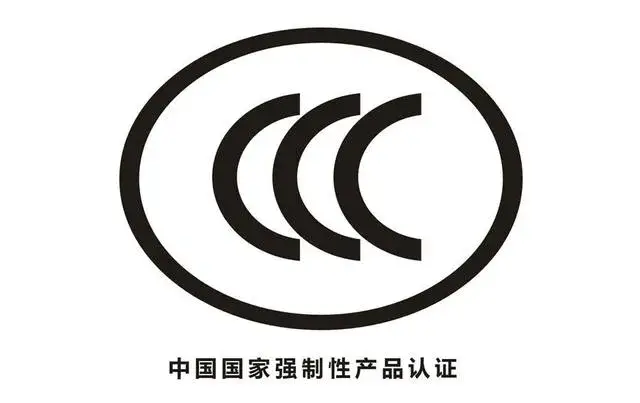
3c logo
9.2 Tips to Avoid Trouble at Airport Security
To breeze through security without losing your charger, follow a few practical steps. First, choose power banks that clearly display capacity in mAh or Wh—this is often printed on the case. Avoid decorative or branded versions with no technical info.
For power strips, keep them simple and short. Don’t pack retractable reels or high-wattage boards. If you're using a USB power strip, make sure it doesn’t include surge protection modules, which sometimes confuse scanners.
It’s also smart to take them out during security check—especially in airports like Beijing Capital or Shenzhen Bao’an, where scans are thorough. If questioned, calmly explain the capacity and certification—some staff speak basic English, but showing specs can help more than words.
9.3 Best Travel-Friendly Picks for Flying in China
If you're shopping for flight-safe gear, go for compact, certified, and clearly labeled items. Recommended power banks include Anker 20,000mAh (model 325 or 535) and Xiaomi Mi 3 Pro, both well under the 100Wh threshold and clearly marked. For power strips, consider the Baseus 3-outlet USB cube—small, simple, and CAAC-friendly.
Avoid unknown brands on street markets or unverified platforms like Taobao pop-ups. In 2025, airport security has become stricter, and anything that looks suspicious—even if legal—can be held back.
Frequently Asked Questions (FAQs)
Q: Can I charge my laptop without a converter?
Yes—if your laptop charger supports 220V. Most modern chargers (especially Apple, Lenovo, Dell) are dual-voltage. Flip your charger and check the label. If it says “100–240V,” you’re all set—just use a plug adapter. If it only says “110V,” you’ll need a voltage converter. But honestly, in 2025, most laptops are compatible out of the box.
Q: Are hotel outlets safe to use?
In general, yes—especially in mid-range or upscale hotels. They often install multi-standard outlets or offer adapters at the front desk. But in older hotels or budget stays, sockets can be worn out, mismatched, or limited to Type I. Always check the socket shape before plugging in, and avoid using high-wattage devices all at once. If a socket feels loose or sparks, don’t use it—ask for a room change or help from staff.
Q: What is the best plug adapter for China in 2025?
We recommend the Flight 001 4-in-1, Anker PowerPort Cube, or Ugreen universal adapters. Look for models with USB-C ports, built-in fuse, and surge protection. Avoid no-name brands from street markets—they often lack safety features. If you’re traveling across Asia, pick one that covers Type A, C, G, and I. For long trips, consider a USB power strip with multi-device charging.
Q: Are shared power banks in China compatible with foreign phones?
Yes, and they’re surprisingly convenient. Brands like JieDian and Meituan provide rental power banks with built-in Lightning, USB-C, and Micro-USB cables. Just scan the QR code, pay with WeChat or Alipay (both accept foreign cards now), and go. They work with iPhones, Androids, and even smaller devices like earbuds. It’s the easiest backup plan if your phone dies in a mall or station.
Q: Will my universal adapter work on Chinese bullet trains?
If it supports Type I, yes. Newer G and D trains usually have Type I outlets or USB-A ports near the seat. Older trains might not. Universal adapters with a slim profile are more practical—bulky plugs may block shared sockets or get in the way. Also, avoid using high-wattage devices on trains. For peace of mind, keep a small power bank in your bag, especially for long-distance rides.
Q: How do I know if my device is compatible with 220V power?
Flip the charger and check the input label. If it says something like “Input: 100–240V ~ 50/60Hz”, you’re fine—just use a plug adapter. If it says only “110V” or doesn’t list a range, then you’ll need a converter to safely use it in China. This rule mostly applies to older hair dryers, curling irons, or single-voltage appliances. For phones, laptops, cameras, and e-readers, dual-voltage is now the norm.
Q: What if my adapter keeps falling out of the socket?
That happens! Many sockets in China try to fit multiple plug types, so the grip isn’t always tight. If your plug keeps sliding out, switch to a right-angle adapter that hangs flat against the wall. Or use a short extension cord to relieve pressure. Avoid “daisy-chaining” multiple adapters—it’s a fire risk.
Want more smart travel tips for China? Check out our guides on using Alipay, WeChat QR codes, Didi rides, and China metro like a local.
